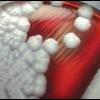Hi all,
So we can assess in a more fast and methodically the risk of a material on the production, i decided to try and develop a method of assessment. The results will be diplayed on the Risk Assessment document.
Please see in the document attached and i would be very thankfull for your inputs on this matter, such as if you agree with it or not, what would you do to improve, etc...
Just to clear som info, the assessment is for Glass, hard plastics and sharp metals.
The matrix was adapted from an FDA document.
The decision tree was based on the annex II of the BRC6.
I hope to have your feedback!
Paulo
- Home
- Sponsors
- Forums
- Members ˅
- Resources ˅
- Files
- FAQ ˅
- Jobs
-
Webinars ˅
- Upcoming Food Safety Fridays
- Recorded Food Safety Fridays
- Upcoming Hot Topics from Sponsors
- Recorded Hot Topics from Sponsors
- Food Safety Live 2013
- Food Safety Live 2014
- Food Safety Live 2015
- Food Safety Live 2016
- Food Safety Live 2017
- Food Safety Live 2018
- Food Safety Live 2019
- Food Safety Live 2020
- Food Safety Live 2021
- Training ˅
- Links
- Store ˅
- More






















